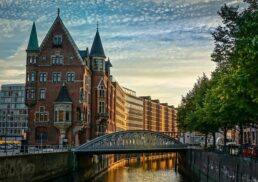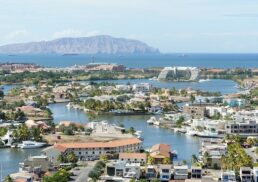What makes Croatia an important part of Europe, Croatia? Since joining the European Union in 2013, Croatia has undergone significant changes. From economic growth to infrastructural development, Croatia’s integration into the EU has transformed it in many ways. This article delves into how EU membership has shaped the country’s progress and what it means for both locals and visitors.
Table of Contents
Key Takeaways
Since joining the EU in 2013, Croatia has experienced significant economic growth, infrastructure improvements, and social benefits, particularly in healthcare and tourism.
EU funding has been crucial for various development projects, including transportation, energy security, and environmental protection, reinforcing Croatia’s economic stability.
Croatia’s geographical location and diverse climate enhance its appeal for tourism and trade, while its parliamentary system supports democratic governance and EU integration.
Croatia’s EU Membership: A Decade of Growth
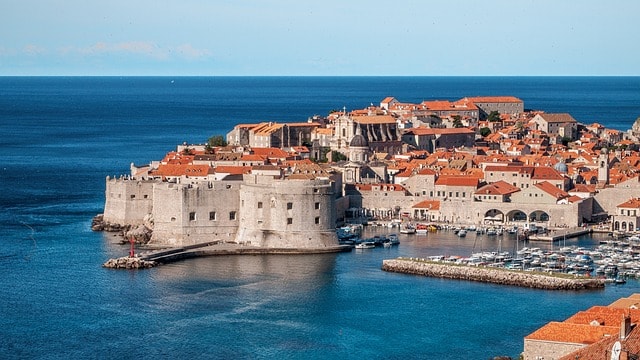
Since Croatia joined the European Union in 2013, the country has undergone profound transformations. These changes span economic development, infrastructure improvements, and enhanced social benefits, all contributing to a more robust Croatian economy and society. The adoption of the euro in 2023 further signifies Croatia’s deeper integration into the European economic fabric, offering new opportunities for trade and investment.
Economic growth has been one of the most notable aspects of Croatia’s EU membership. The Croatian economy has seen a steady increase in GDP, driven by a surge in tourism and foreign direct investment. Infrastructure projects funded by the EU have modernized the country’s transport and energy systems, while social benefits, particularly in healthcare, have improved the quality of life for Croatian citizens.
The journey of Croatia’s EU membership is a testament to the potential of European integration. From economic advancements to social improvements, Croatia’s decade in the EU highlights the transformative power of collective growth and cooperation among EU countries. We begin with economic growth.
Economic Development
Post-EU membership, the Croatian economy has experienced a steady GDP growth, averaging 2–3% annually between 2015 and 2020. This growth has been fueled by an increase in foreign direct investment, which has played a crucial role in job creation and economic stability. Particularly, the tourism sector has flourished, now accounting for nearly 20% of the country’s GDP, primarily along the scenic Adriatic coastline.
Beyond tourism, Croatia’s economy is bolstered by diverse industries such as agriculture, shipbuilding, and natural gas production. Tourists flocking to Croatia’s coastal areas have significantly boosted local economies, underscoring the importance of the tourism sector.
These economic strides reflect a broader trend of growth and resilience in the Croatian economy, positioning it as a dynamic player within the EU.
Infrastructure Improvements
Infrastructure improvements in Croatia have been significantly enhanced by EU funding, which has been instrumental in modernizing various sectors. One of the notable projects includes the upgrade of Croatia’s railway system, improving connectivity and efficiency across the country. The floating LNG terminal on Krk Island stands out as a major EU-funded initiative aimed at enhancing energy diversification and security in the region.
Other significant investments have focused on Croatia’s sewerage and water systems, with projects targeting the renovation of 775 kilometers of sewer networks and the construction of multiple wastewater treatment facilities.
Additionally, the energy renovation initiative aims to upgrade over 180,000 square meters of public and multi-apartment buildings to enhance energy efficiency by 2026. These projects not only improve infrastructure but also contribute to environmental sustainability and the overall quality of life in urban areas.
Social Benefits
The social benefits of Croatia’s EU membership are evident in the significant improvements in public services, particularly healthcare. EU funding has played a pivotal role in enhancing the quality of medical services, leading to shorter waiting times for patients and better overall healthcare outcomes. These improvements have been crucial in ensuring that Croatian citizens have access to high-quality medical care.
Beyond healthcare, EU funding has facilitated broader enhancements in public services, contributing to a higher standard of living for Croatian people. These social benefits underscore the tangible impact of Croatia’s integration into the European Union, demonstrating how EU membership can directly improve the wellbeing of its citizens.
EU Contributions and Funding in Croatia
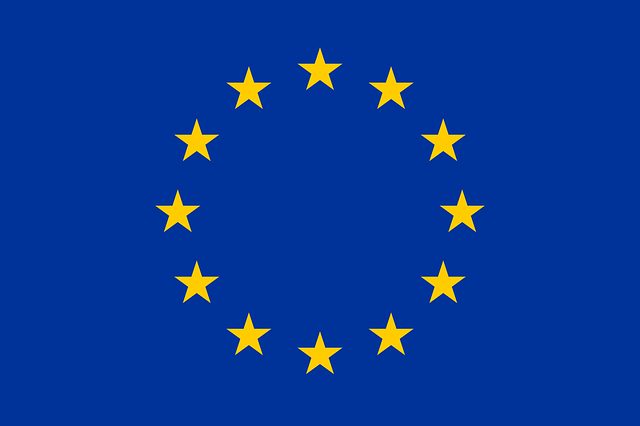
Since joining the European Union, Croatia has received substantial financial support aimed at enhancing its economic stability and development. This financial assistance has been pivotal in funding various development projects across the country, from infrastructure improvements to public service enhancements. The contributions and funding from the EU have not only bolstered the Croatian economy but have also facilitated significant social and environmental projects.
Croatia’s financial contributions to the EU budget are calculated based on economic indicators, ensuring that its contributions are proportional to the size of its economy. This balanced approach to contributions and funding highlights the cooperative nature of EU membership, where each member state supports the collective growth and stability of the union.
We can further explore this dynamic by examining Croatia’s budget contributions and the key projects funded by the EU.
Budget Contributions
Croatia’s contributions to the EU budget are calculated based on the country’s economic performance and size, ensuring that each member state’s contributions are fair and proportional. These contributions are essential for maintaining the financial stability of the European Union and supporting various EU-wide initiatives.
The financial contributions from Croatia are a reflection of its economic integration within the EU framework. Despite being a smaller economy compared to some other EU countries, Croatia’s contributions are significant and demonstrate its commitment to the collective growth and stability of the union.
These contributions enable the EU to fund numerous projects that benefit not only Croatia but the entire European community.
Funded Projects
The European Union has funded a wide range of projects in Croatia, significantly impacting the country’s development. Key projects include road construction, which has improved connectivity and transportation infrastructure, and research subsidies that have boosted innovation and technological advancements. Environmental protection initiatives have also been a major focus, helping to preserve Croatia’s natural beauty and biodiversity.
One of the most notable EU-funded projects is the LNG terminal on the island of Krk, which enhances energy security and diversification for Croatia and the region. Additionally, the Krka National Park, home to over 1,022 plant species, has benefited from EU funding, promoting both conservation and tourism.
These projects underscore the tangible benefits of EU membership for Croatia, driving economic growth and sustainability.
Geographical Significance of Croatia in Europe
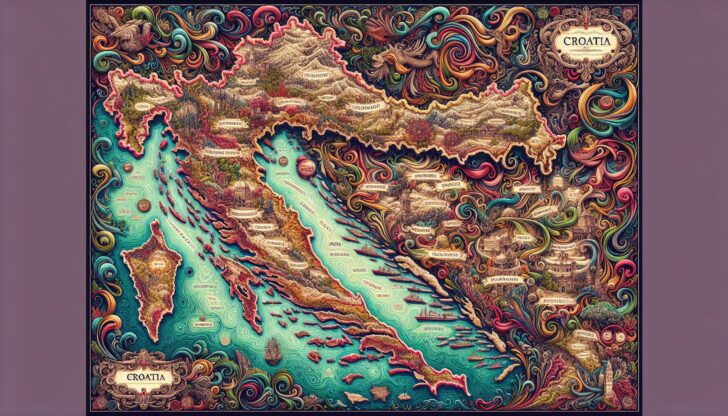
Croatia’s geographical location in Southeastern Europe plays a crucial role in its strategic importance within the European Union. The country’s diverse geography, featuring low mountains, highlands, and a stunning Adriatic coastline, enhances its appeal as both a tourist destination and a hub for trade and commerce. The Adriatic Sea, with its 1,200 islands, is a significant geographical feature that impacts both the economy and the cultural identity of Croatia.
The Adriatic coastline is renowned for its natural beauty and favorable climate, making it a magnet for tourists from around the world. This coastline not only supports a thriving tourism industry but also plays a vital role in maritime activities and trade. Croatia’s strategic location and diverse geography have cemented its position as a key player in regional dynamics.
To grasp the full impact of Croatia’s geographical significance, we begin with the Adriatic coastline and its contributions to tourism and the economy. Subsequently, we will examine Croatia’s borders with neighboring countries and how these relationships influence trade and diplomacy.
Adriatic Coastline
The Adriatic coastline is one of Croatia’s most treasured assets, featuring mild winters and hot, dry summers that create a perfect environment for tourism. The climate along the coast is particularly attractive, with summer temperatures often exceeding 86°F and minimal rainfall, drawing visitors to its beautiful beaches and clear waters. This favorable climate has made Croatia a top destination along the Adriatic coast, contributing significantly to the economy.
The Adriatic Sea is not only vital for tourism but also for maritime activities that enhance Croatia’s economic profile. The hot summers and dry conditions along the coastline have bolstered tourism, making it an essential part of the Croatian economy. The synergy between the natural beauty of the Adriatic coast and the economic benefits it brings highlights the importance of this geographical region.
Bordering Countries
Croatia shares borders with five countries, enhancing its role in regional trade and diplomacy. These borders with:
Slovenia
Hungary
Serbia
Bosnia and Herzegovina
Montenegro
are crucial for facilitating economic exchanges and fostering diplomatic relations. The strategic location of Croatia in Southeastern Europe and Eastern Europe allows it to act as a bridge between Central Europe and the Balkans, further enhancing its geopolitical significance.
The borders also play a significant role in Croatia’s cultural and historical connections with its neighbors. These relationships have shaped Croatia’s identity and its interactions within the region. The interplay between geography and diplomacy underscores the importance of Croatia’s borders in its overall strategic framework.
Climate and Natural Beauty
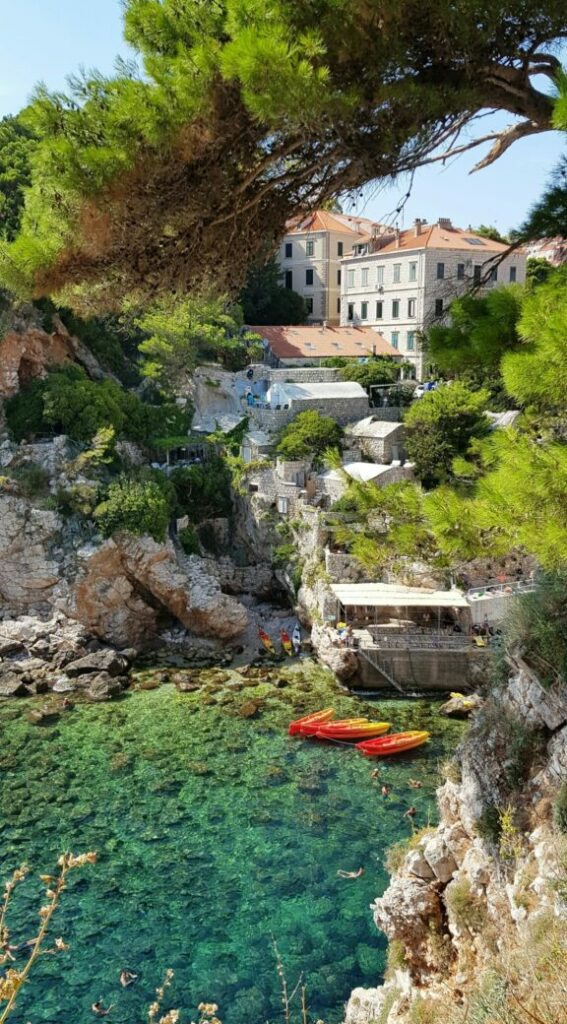
Croatia’s natural beauty is complemented by its varied climate, which ranges from a Mediterranean climate along the coast to a continental climate in the interior regions. This diversity in climate contributes to the rich biodiversity and stunning landscapes that make Croatia a popular tourist destination. The Adriatic coastline, with its clear waters and numerous islands, contrasts beautifully with the inland regions characterized by low mountains and lush forests.
The natural attractions of Croatia, including its national parks and diverse ecosystems, are a testament to the country’s commitment to preserving its environmental heritage. These natural wonders not only draw tourists but also play a crucial role in maintaining ecological balance.
We will better understand Croatia’s climate and natural beauty by examining the differences between the coastal and inland climates and the significance of its national parks.
Mediterranean and Continental Climate
Croatia predominantly experiences a continental climate, particularly in its interior regions. Summers in these areas can be extremely hot, often exceeding 86°F, while winters are cold, with temperatures dropping to between 23°F and 41°F and significant snowfall in elevated regions. This sharp contrast in seasonal temperatures is a defining characteristic of the continental climate in Croatia.
Along the Adriatic coast, the climate is more Mediterranean, with mild winters and hot, dry summers. Summer temperatures along the coast can reach over 86°F, while winters are mild, averaging around 41°F with rare occurrences of snow. This Mediterranean climate makes the Adriatic coast an attractive destination for tourists, contributing to Croatia’s reputation as a premier holiday spot.
Learn more, checkout Climate zones in Europe and the Mediterranean – Barenbrug
National Parks and Biodiversity
Croatia’s national parks are among its most cherished natural treasures, covering over 1,000 km² and protecting a variety of ecosystems. The Plitvice Lakes National Park, renowned for its cascading lakes and rich biodiversity, is a UNESCO World Heritage site and a major tourist attraction. Similarly, Paklenica National Park is known for its steep canyons and diverse wildlife, including bears and wolves.
These national parks play a vital role in conserving Croatia’s biodiversity and supporting sustainable tourism. The presence of varied ecosystems, from marine environments to inland forests, highlights the ecological richness of Croatia. These protected areas are not only popular tourist destinations but also crucial for maintaining the natural heritage of the country.
Cultural Heritage and Language
Croatia’s rich cultural heritage is a tapestry woven from centuries of history, art, and tradition. The country’s numerous historical landmarks reflect its diverse past, from ancient Roman ruins to medieval fortresses and Renaissance palaces. These sites, many of which are UNESCO World Heritage sites, attract visitors from around the globe, eager to explore Croatia’s storied past.
The Croatian language is a crucial element of this cultural identity. As the official language, it not only unites the Croatian people but also serves as a bridge to the country’s history and traditions. The linguistic diversity within Croatia, including recognized minority languages, further enriches its cultural landscape.
Delving deeper, we explore some of Croatia’s notable historical landmarks and the development of the Croatian language.
Historical Landmarks
Croatia’s historical landmarks are a testament to its rich and varied past. The ancient city of Dubrovnik, with its well-preserved medieval walls and stunning architecture, is a UNESCO World Heritage site and a symbol of Croatia’s cultural heritage. Another significant site is the Roman amphitheater in Pula, one of the best-preserved ancient structures of its kind and a reminder of Croatia’s Roman legacy.
These landmarks are not just remnants of the past; they are vibrant parts of the present that continue to draw tourists and historians alike. Celebrations such as Cravat Day, which honors the Croatian origin of the cravat, further highlight the unique cultural contributions of Croatia to the world.
These sites and traditions are integral to understanding and appreciating the depth of Croatian culture.
Croatian Language
The Croatian language, part of the South Slavic language group, is the official language of Croatia and a cornerstone of its national identity. Standard Croatian has developed from various dialects, with the Shtokavian dialect being the most influential. The language’s history can be traced back to Glagolitic texts from the 11th century, showcasing its deep historical roots.
In addition to Croatian, several minority languages are recognized and spoken within the country, contributing to its linguistic diversity. This multilingualism reflects Croatia’s inclusive approach to its cultural and ethnic diversity, enriching the country’s social fabric and enhancing its cultural heritage.
Governance and Political Structure
Croatia operates as a parliamentary republic, with a political system that emphasizes democratic governance and the rule of law. The Croatian parliament, known as the Sabor, plays a central role in the legislative process, ensuring that Croatian laws align with European standards and governance models. Croatia’s integration into the EU has been a significant milestone, symbolizing its commitment to collective European welfare and regional stability.
The current political leadership, including Prime Minister Andrej Plenković and President Zoran Milanović, continues to steer Croatia towards greater integration and cooperation within the EU. This political structure supports Croatia’s ongoing development and its efforts to address shared challenges within the European Union.
To better understand this, we will explore the parliamentary republic and Croatia’s EU integration process.
Parliamentary Republic
Croatia’s parliamentary republic is characterized by a unicameral legislative body, the Sabor, which consists of 151 seats. This structure was established in 2001 when Croatia transitioned from a bicameral to a unicameral parliament. The president of Croatia, who serves a five-year term, plays a significant role in the country’s political landscape.
The Sabor is responsible for enacting legislation, approving the budget, and overseeing the actions of the government. This democratic framework ensures that the Croatian government remains accountable to its citizens and aligned with European democratic principles.
The parliamentary republic model supports Croatia’s stability and its ability to effectively participate in the European Union.
EU Integration
Croatia’s integration into the European Union has been a meticulously planned and executed process. Croatian law was fully harmonized with the EU acquis in June 2010, marking a crucial step towards full EU membership. This harmonization ensured that Croatian legislation aligned with European standards, facilitating smoother integration into EU institutions.
EU membership has enabled Croatia to participate actively in EU decision-making processes and benefit from various EU programs and initiatives. This integration symbolizes Croatia’s commitment to European values and its strategic importance within the EU framework.
The ongoing efforts towards deeper integration continue to enhance Croatia’s role in the European Union.
Economy and Key Industries
The Croatian economy has shown resilience and growth, despite facing challenges such as low productivity and high levels of corruption. The economy is classified as high-income and advanced, heavily reliant on the service sector, particularly tourism. However, the country also contends with issues like weak exports and ongoing emigration, which have been exacerbated by the COVID-19 pandemic.
Croatia’s natural resources and scenic landscapes make it a favored tourist destination, contributing significantly to the country’s GDP. Besides tourism, other key industries such as shipbuilding, food and beverages, chemicals, and machine tools play vital roles in the Croatian economy.
To better understand the economic landscape, we delve into the tourism sector and other major industries.
Tourism Sector
Tourism is a cornerstone of the Croatian economy, contributing nearly 20% to the country’s GDP. The Adriatic Sea, with its clear waters and numerous islands, is a major draw for tourists, making Croatia a popular destination for holidaymakers. The service sector, particularly tourism, plays a critical role in economic growth and job creation, especially along the Dalmatian Coast.
Popular tourist destinations like Dubrovnik, Split, and the Plitvice Lakes attract millions of visitors each year. The influx of tourists has a multiplier effect on the local economies, boosting businesses ranging from hospitality to retail. This vibrant tourism sector underscores the importance of preserving Croatia’s natural and cultural heritage to sustain economic growth.
Other Major Industries
Apart from tourism, Croatia’s economy benefits from several other key industries. Shipbuilding is a traditional industry with several shipyards operating along the coast, contributing significantly to exports and employment. The food and beverage industry, chemicals, plastics, and machine tools are also important sectors that support the Croatian economy.
These industries, while not as prominent as tourism, play crucial roles in diversifying Croatia’s economic base and providing employment opportunities. The coexistence of these varied industries highlights the multifaceted nature of the Croatian economy and its potential for sustained growth and development.
Demographics and Society
Croatia’s demographics have been shaped by both historical and contemporary factors. As of 2023, the estimated population is approximately 3.86 million, reflecting a decline in recent years due to low birth rates and emigration. The birth rate has decreased to 8.3 births per 1,000 people, posing challenges for the country’s demographic trends.
Despite these challenges, EU membership has led to significant improvements in the unemployment rate, which has decreased from 17.25% in 2013 to 6.75% in 2022. The demographic trends and societal structure of Croatia provide valuable insights into the country’s social dynamics.
We will explore this further by looking at population distribution and the diverse ethnic groups within Croatia.
Population Distribution
The urban population in Croatia is approximately 56%, indicating a trend towards urbanization. Major cities like Zagreb, Split, and Rijeka are home to more than half of the country’s population, reflecting the concentration of economic and social activities in urban areas. In contrast, the population on the islands and rural areas is described as sparsely populated, with lower population densities.
This urban-rural divide highlights the demographic trends in Croatia, where urban areas continue to grow while rural and island populations experience decline. Addressing this imbalance is crucial for sustainable development and ensuring equitable access to resources and opportunities across the country.
Ethnic Groups and Minorities
The majority of Croatia’s population identifies as Croats, comprising about 91.63% of the demographic as of 2021. Serbs represent the largest minority group, accounting for approximately 3.2% of the population. Croatia’s constitution recognizes 22 minority groups, including Italians, Hungarians, and Roma, contributing to the country’s ethnic diversity.
These ethnic groups and minorities play a significant role in the cultural and social fabric of Croatia. The recognition and inclusion of these groups reflect Croatia’s commitment to multiculturalism and diversity, enriching the country’s societal landscape and fostering a sense of community among its people.
Summary
Croatia’s decade-long journey as a member of the European Union has been marked by significant growth and development. From economic advancements and infrastructure improvements to enhanced social benefits and cultural preservation, Croatia has made remarkable strides within the EU framework. The financial support and collaborative projects funded by the EU have played a pivotal role in shaping the country’s progress and stability.
Looking ahead, Croatia’s continued integration into the European Union promises further opportunities for growth and cooperation. The country’s strategic location, rich cultural heritage, and diverse economy position it as a dynamic and vital member of the EU. As Croatia moves forward, its commitment to European values and collective progress will undoubtedly contribute to a brighter and more prosperous future for its people.
Frequently Asked Questions
When did Croatia join the European Union?
Croatia joined the European Union on 1 July 2013.
What has been the impact of EU membership on Croatia’s economy?
EU membership has positively impacted Croatia’s economy, resulting in steady GDP growth, heightened foreign direct investment, and enhanced infrastructure and public services.
How has EU funding benefited Croatia?
EU funding has significantly benefited Croatia by facilitating infrastructure upgrades, enhancing healthcare systems, and advancing environmental protection initiatives. These investments have contributed to the country’s overall development and progress.
What are some of the notable historical landmarks in Croatia?
Croatia is home to remarkable landmarks such as the ancient city of Dubrovnik, the Roman amphitheater in Pula, and the stunning Plitvice Lakes National Park. Each of these sites offers a unique glimpse into the country’s rich history and natural beauty.
What is the significance of the Adriatic coastline for Croatia?
The Adriatic coastline is crucial for Croatia’s economy, primarily due to its role in tourism and maritime activities, supported by a favorable Mediterranean climate that attracts visitors.

